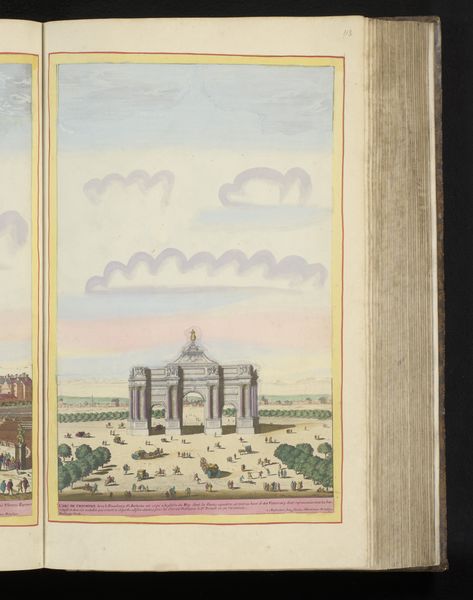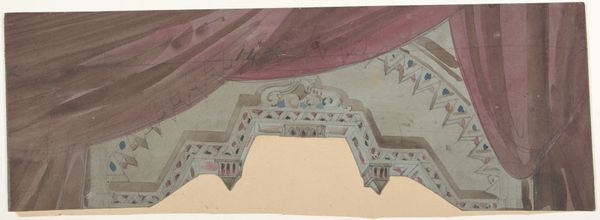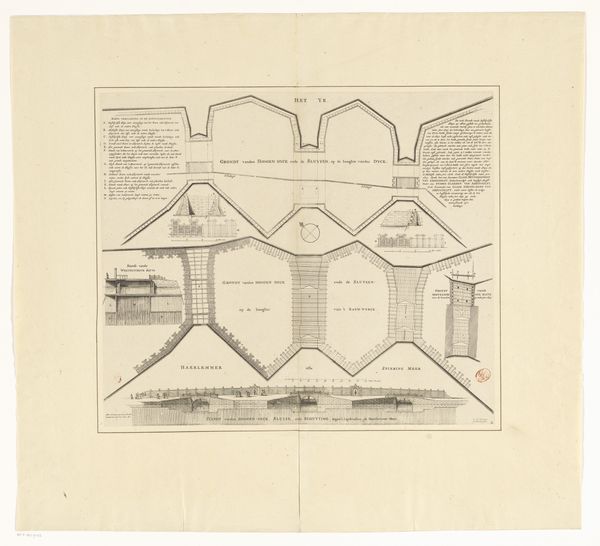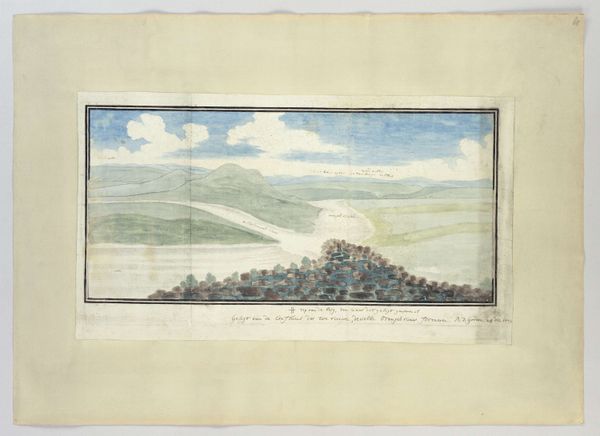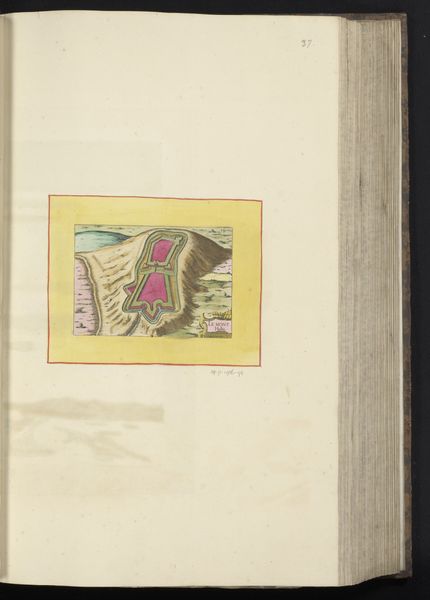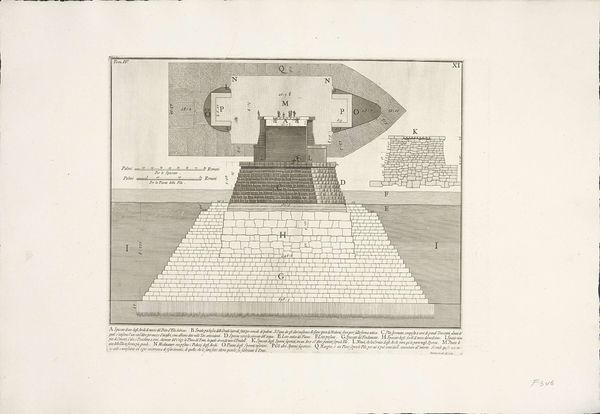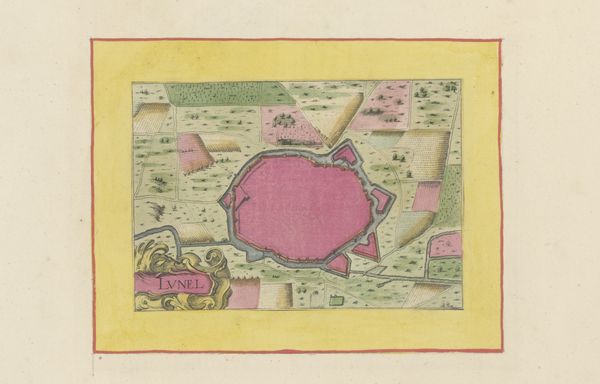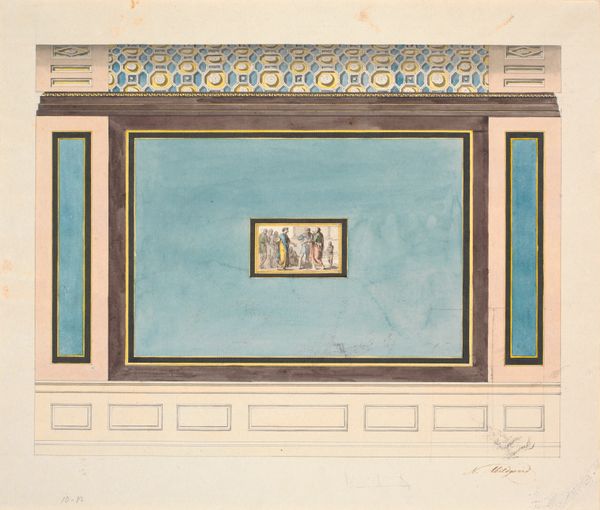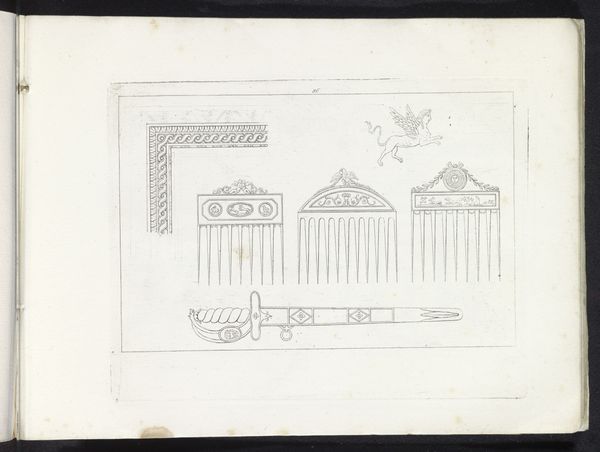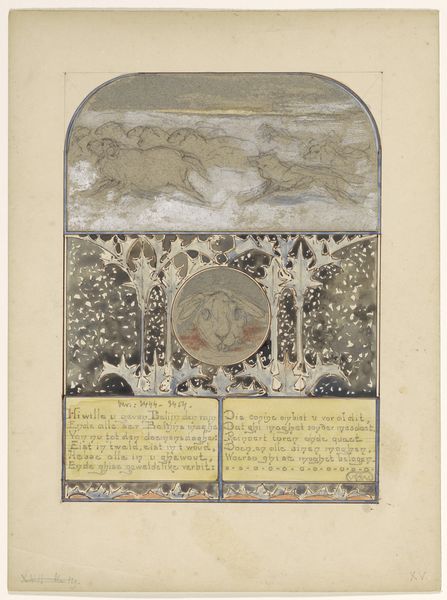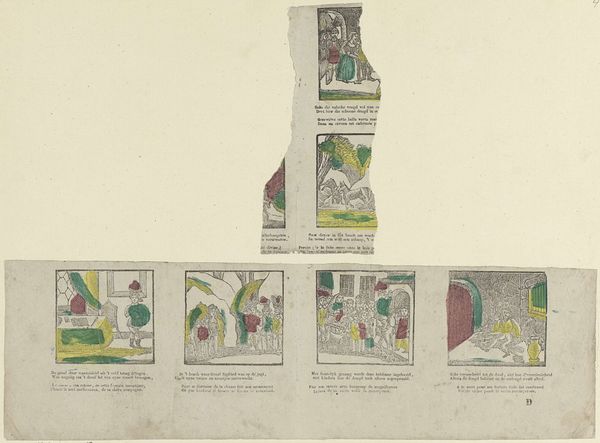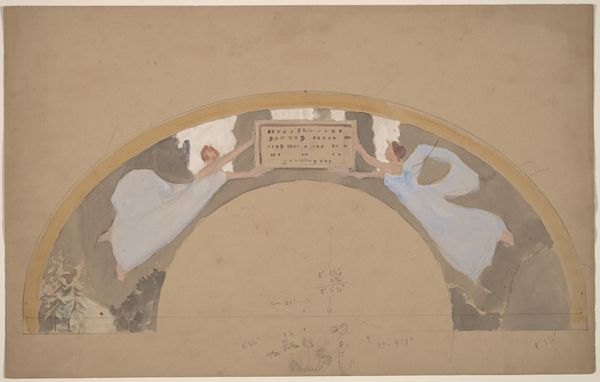
Marmeren grafkist op de begraafplaats van de basiliek van Saint-Seurin in Bordeaux after 1650
0:00
0:00
drawing, paper, ink
#
drawing
#
baroque
#
landscape
#
paper
#
ink
#
watercolour illustration
#
history-painting
#
watercolor
Dimensions: height 171 mm, width 199 mm, height 532 mm, width 320 mm
Copyright: Rijks Museum: Open Domain
Curator: Let’s delve into this delicate watercolor and ink drawing, held at the Rijksmuseum. It's titled "Marmeren grafkist op de begraafplaats van de basiliek van Saint-Seurin in Bordeaux" or "Marble tomb in the cemetery of the Basilica of Saint-Seurin in Bordeaux" and dates from after 1650. Editor: Well, my immediate reaction is a sense of quiet observation. The composition is remarkably simple, yet the cool tones of the marble suggest a kind of weighty permanence. It feels meticulously rendered. What does this period offer in terms of insight into material conditions? Curator: This Baroque-style landscape offers insights into the era's fascination with death and commemoration, linking to shifting spiritual beliefs and sociopolitical hierarchies of the time. The site of Saint-Seurin held considerable importance and would have been seen as politically relevant. Editor: Exactly. The choice of marble is fascinating; not just for its symbolic association with wealth and power, but also its labor-intensive production and transportation. I’m interested in the quarries, the sculptors…the hands that shaped this funerary object. I’m drawn to understand this within systems of social power. Curator: Absolutely, it serves as a record of both status and memory but let’s also think about the function of these settings. The promise of healing at this tomb serves both religious needs, but could serve another, a power dynamic in accessing health based on access, social standing. This would have reflected deep social divisions in seventeenth-century Bordeaux. Editor: That element of social stratification intrigues me deeply; were specific materials selected with specific demographics in mind? Did the act of seeking "healing" vary across class or race? It moves our focus beyond just religious practice. Curator: Indeed, considering such questions invites us to dissect how materiality intertwines with social rituals, especially regarding death, health, and visibility in a public space. Editor: Considering the original marble object this is a depiction of, it reframes my initial response, moving away from quiet observation and prompting me to reflect more on the material systems underlying the creation of art— both this depiction and the funerary object it represents. Curator: Ultimately, engaging with this seemingly modest artwork allows us to explore how historical sites, depicted through specific artistic mediums, encapsulate a multitude of stories relating to identity, access, and social structure.
Comments
No comments
Be the first to comment and join the conversation on the ultimate creative platform.

